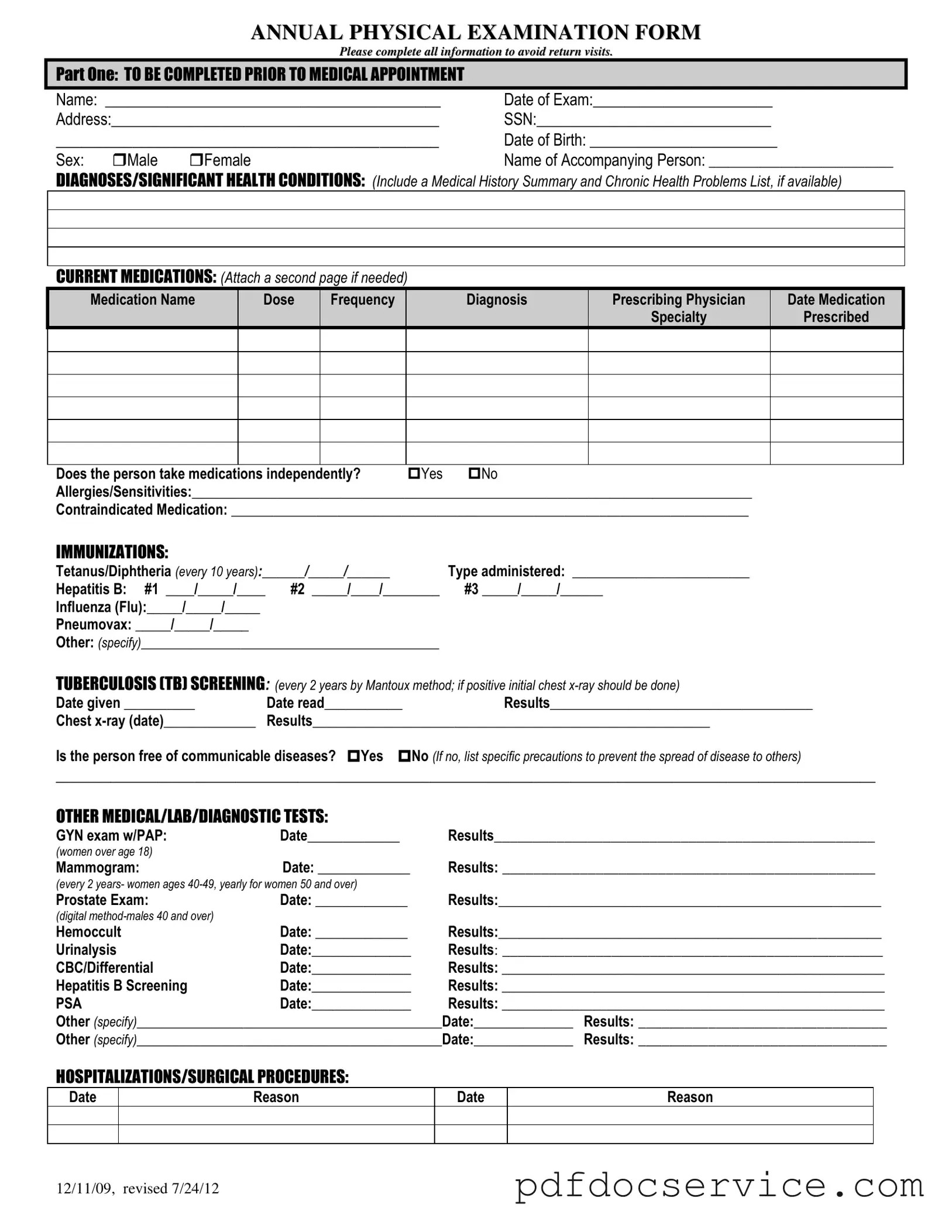Fill Your Annual Physical Examination Form
The Annual Physical Examination form is a crucial document designed to collect comprehensive health information prior to a medical appointment. This form ensures that healthcare providers have all necessary details to deliver effective care and address any significant health concerns. Completing this form accurately helps to streamline the examination process and fosters better communication between patients and their healthcare teams.
Open Annual Physical Examination Editor
